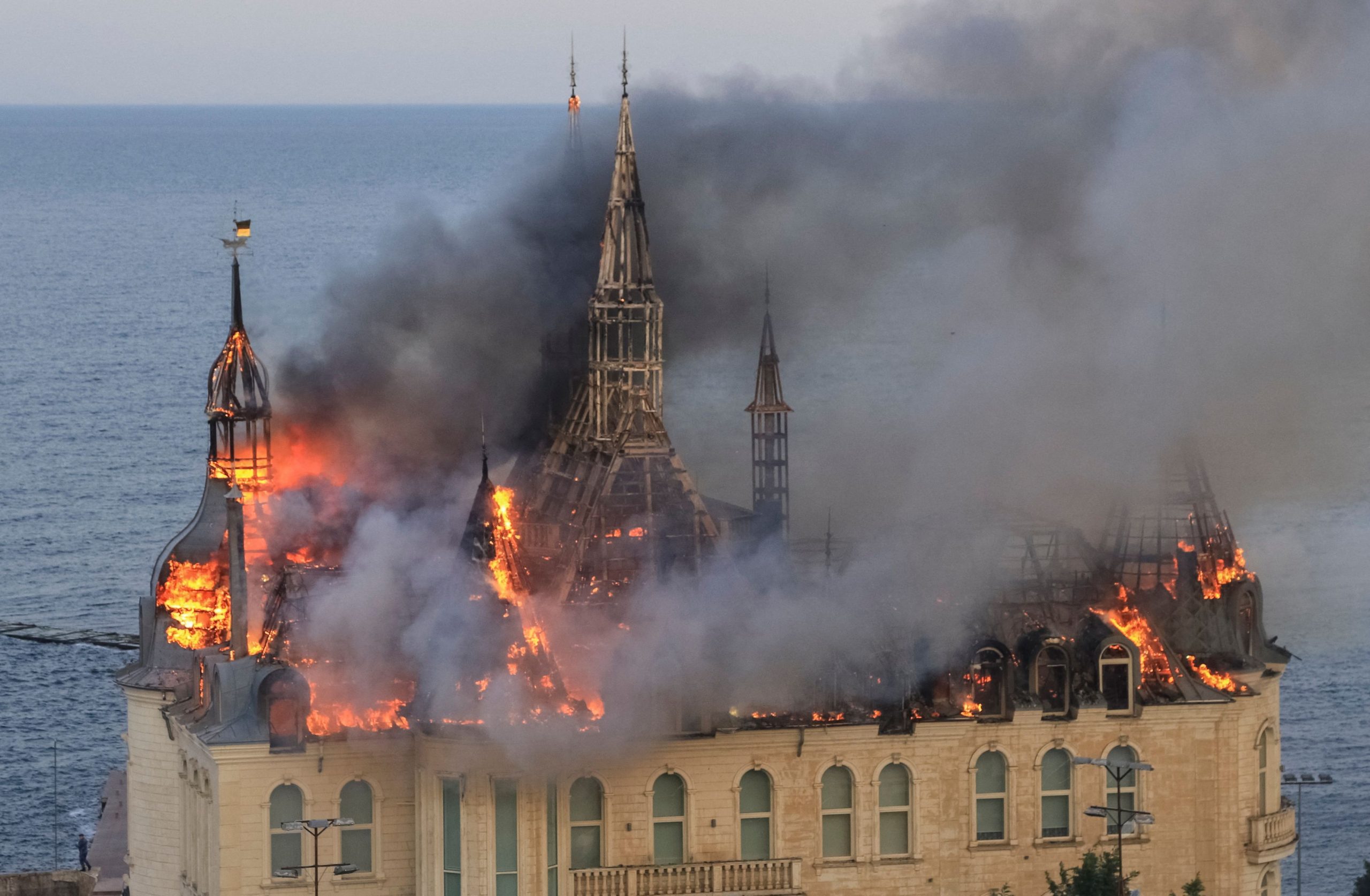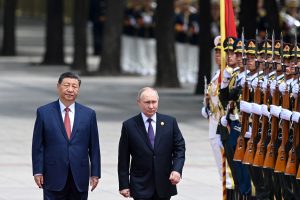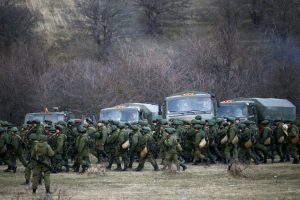Ukraine is shooting down a far smaller proportion of Russian missile attacks than it was earlier in the war.
The worsening performance of Ukraine’s air defenses comes as Russia increases drone and missile attacks, and fires more harder-to-hit weapons, such as ballistic missiles. Kyiv is also running low on ammunition for the Western-supplied Patriot systems that have been its best defense against such attacks.
In the past six months, Ukraine intercepted around 46% of Russian missiles, compared with 73% in the preceding six-month period, according to a Wall Street Journal analysis of daily data from the Ukrainian Air Force Command. Last month the interception rate fell to 30% of missiles. The interception rate for long-range Shahed drones , which are easier to shoot down, fell just 1 percentage point to 82% in the past six months.

While the attack and interception data for several days was incomplete, and Ukraine uses such statistics for propaganda purposes, a UAF spokesman and an independent defense analyst said the data gave an overall accurate picture.
The increased bombardment is destroying infrastructure and cities while sapping Ukraine’s already sparse supply of missiles, which the country needs to keep Russia’s air force out of its skies.
Secretary of State Antony Blinken said Sunday on CBS News’s “Face the Nation” that the monthslong delay getting congressional approval for Ukraine aid has come at a cost.
“We are doing everything we can to rush this assistance out there. Europeans are doing the same,” Blinken said.
The next two or so months will be crucial for whether Russia’s air force can be held at bay before new Western air-defense supplies arrive in Ukraine, according to a European military intelligence official.
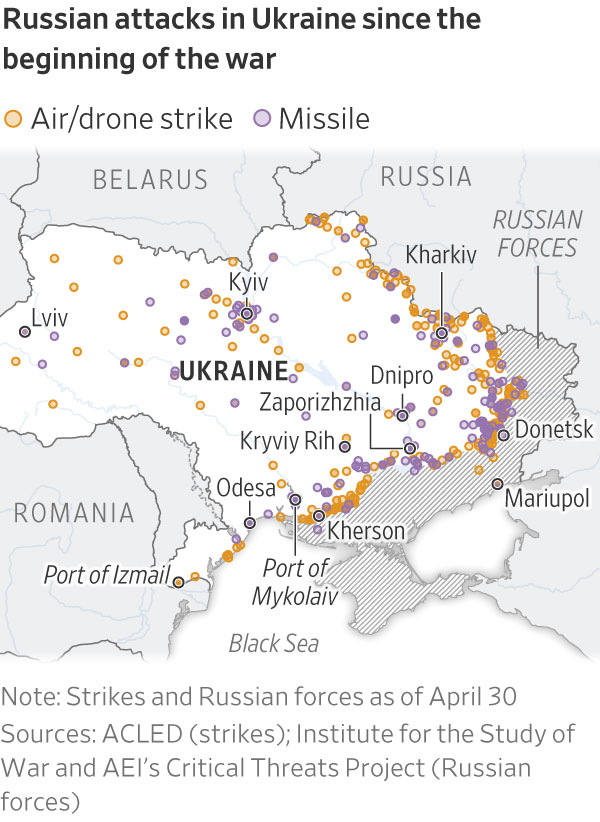
“The less of a threat Ukrainian defenses pose to Russian air power the greater the threat to Ukrainian forces on the ground and critical infrastructure,” said Douglas Barrie, a specialist in military aerospace at the International Institute for Strategic Studies, a think tank.
Over the past six months, Russia fired around 45% more drones and missiles than in the proceeding six-month period, according to the data.
Intercepting the greater volume of attacks runs down ammunition stocks while large barrages can also overwhelm Ukrainian defenses, with air-defense systems sometimes unable to reload quickly enough, a UAF spokesman said.
Russia fired almost double the number of Shahed drones, at 2,628, in the past six months compared with the previous period, the data shows. The drones are partly used to test air defenses before missiles are sent in, analysts said.
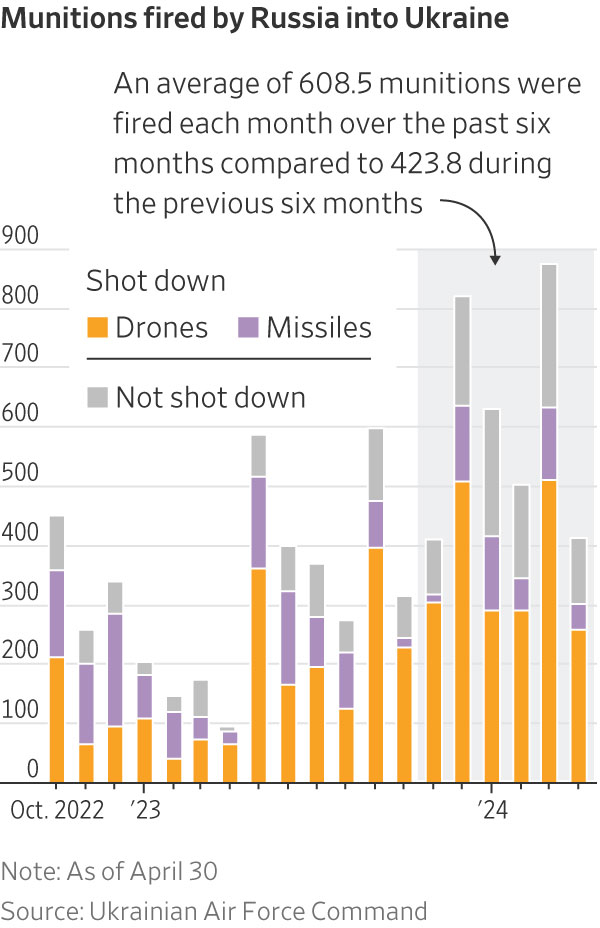
It also fired 114 ballistic and 46 hypersonic Kinzhal and Zircon missiles, compared with 33 and 27, respectively, for the previous six months. Moscow has also repurposed air-defense systems to attack Ukraine, firing 175 missiles from its S-300 or S-400 air-defense system into unoccupied Ukraine this year alone.
In the past six months, Ukraine has shot down just 10% of the ballistic missiles Russia has fired. It hasn’t intercepted any of the S-300 and S-400 missiles fired into Ukraine so far this year, according to the data.
The data show higher interception rates for cruise missiles, such as the Kh-555. The UAF says they can be intercepted with a wider range of air defense because they are typically slower and smaller. Ukraine uses midrange defense systems, such as the Western-supplied Nasams, to shoot down these missiles.

The Patriot is Ukraine’s only reliable way to shoot down ballistic, S-300 and hypersonic missiles. But Kyiv has few Patriot systems and has had to conserve missiles, not least as fresh U.S. supplies were held up in Washington.
Now those supplies have been unlocked , the Defense Department has said it would send more Patriot interceptors. While some of these missiles will likely come from stockpiles, others will be ordered, taking several years to be manufactured.
The UAF declined to give the exact number of Patriot systems currently operating in Ukraine but said they could be counted on one hand. President Volodymyr Zelensky has told reporters that Ukraine needs a minimum of seven additional Patriots but has also separately said 25 of the missile systems would be needed to cover all of Ukraine’s territory.
Ukraine has an array of other missile-defense systems, including Nasams and the Iris/T, though these aren’t as effective against ballistic or hypersonic missiles and anti-air missiles repurposed from defense to attack.

The air war may now come down to which side can outlast the other on missile supplies. Ukraine is dependent on its Western allies, which are struggling to make missiles fast enough.
Russia still has its own stockpiles and is capable of producing 170 missiles every month, according to a Ukrainian official. Moscow has also received supplies of drones and missiles from its allies, including Iran and North Korea .
For now, Russia continues to attack Ukraine with missiles and drones from locations to the country’s north, east and south.
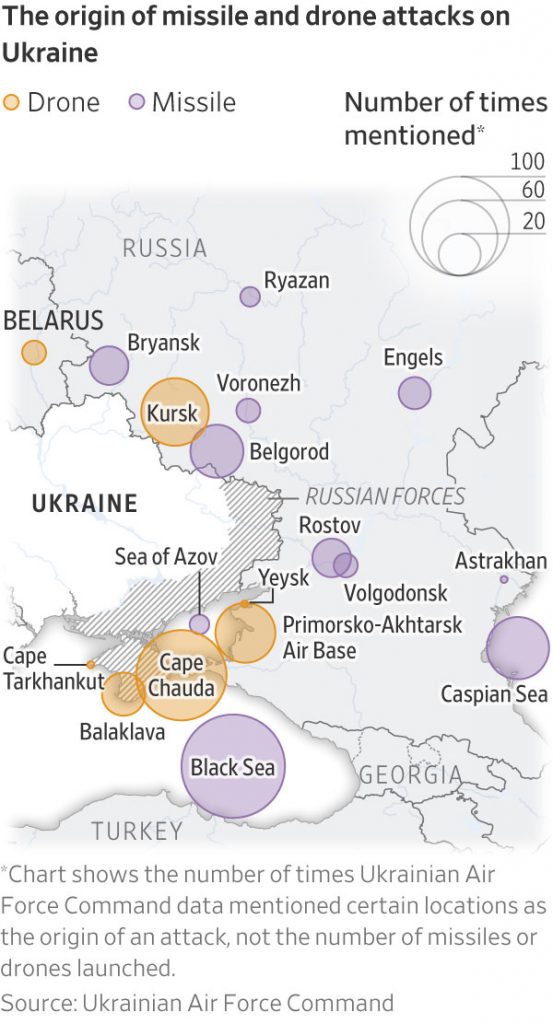
Write to Alistair MacDonald at Alistair.Macdonald@wsj.com , Jemal R. Brinson at jemal.brinson@wsj.com and Emma Brown at Emma.Brown@wsj.com

